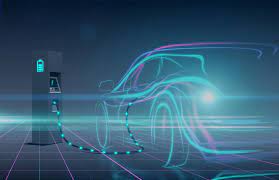
Deploying Charging Infrastructure to Catalyze Market Adoption of Electric Vehicles
The team proposes to develop advanced simulation and optimization tools at the intersection of grid and transportation systems to help state and local agencies and utilities better understand how public electric vehicle supply equipment (EVSE) deployment (i.e., number and placement of EVSE affects EVSE access and electric vehicle (EV) adoption and in turn grid reliability, travel time and cost, mobility energy productivity, distributional equity, air quality, and health across communities. To accomplish this goal, the team will first develop a multi-objective optimization model to determine optimal locations for siting public EVSE based on transportation planner objectives for maximizing public EVSE access for ALL people (maximize demand objective) vs. maximizing public EVSE access for disadvantaged communities (maximize equity objective) areas. EVSE distributions will be integrated into the National Renewable Energy Lab’s NREL’s (NREL) Transportation Energy & Mobility Pathway Options and EVI-Equity (EV Infrastructure for Equity) models to gain a better understanding of how the deployment of EVSE interacts with EV market adoption dynamics, and how the interaction between EVSE and EVs varies across different neighborhoods. After that, the team will develop city-scale electricity distribution network and agent-based transportation network models and combine them to jointly assess how EV adoption and EVSE siting affects both grid (e.g., grid reliability) and transportation (e.g., travel time for different communities) infrastructure. Finally, we will leverage NREL’s mobility energy productivity tool to assess changes in mobility energy productivity (e.g., energy usage), NREL’s EVI-Equity tool to quantify and investigate equitable distribution of EVs and EVSE across neighborhoods, and Intervention Model for Air Pollution (INMAP) to assess air pollution and health impacts based on EV impacts to grid load. We will use multiple vulnerability indicators to assess impacts on disadvantaged communities (e.g., low income, high poverty rate, minority status). The approach will result in the development of new tools, novel approaches to using existing NREL models, and a strategy guide of recommendations and pathways for cities and governments to catalyze EV adoption, enhance EVSE access, and improve mobility, health, and economic outcomes in disadvantaged communities.
Outcomes of the project Include:
• Pathways for increasing EV adoption and EVSE access
• Pathways for increasing mobility energy productivity and grid reliability
• Pathways for reducing GHG emissions and air pollution
• Pathways to support socio-economic outcomes, including equitable EV adoption and EVSE deployments in underserved communities
The project held the first Advisory Board meeting on October 30, 2023.
Project Partners:
National Renewable Energy Laboratory (NREL)
City of Pittsburgh, Department of City Planning
City of Pittsburgh, Department of Mobility & Infrastructure
Project Team:
Corey Harper, Civil & Environmental Engineering, Carnegie Mellon University
Yanbo Ge, NREL
Rick Grahn, Mobility Innovations & Equity Group, NREL
Dong-Yeon Lee, NREL
Karen Lightman, Heinz College, Carnegie Mellon University
Destenie Nock, Civil & Environmental Engineering, Carnegie Mellon University
Amritanshu Pandey, Electrical & Computer Engineering, Carnegie Mellon University
Joshua Sperling, Center for Integrated Mobility Sciences, NREL
